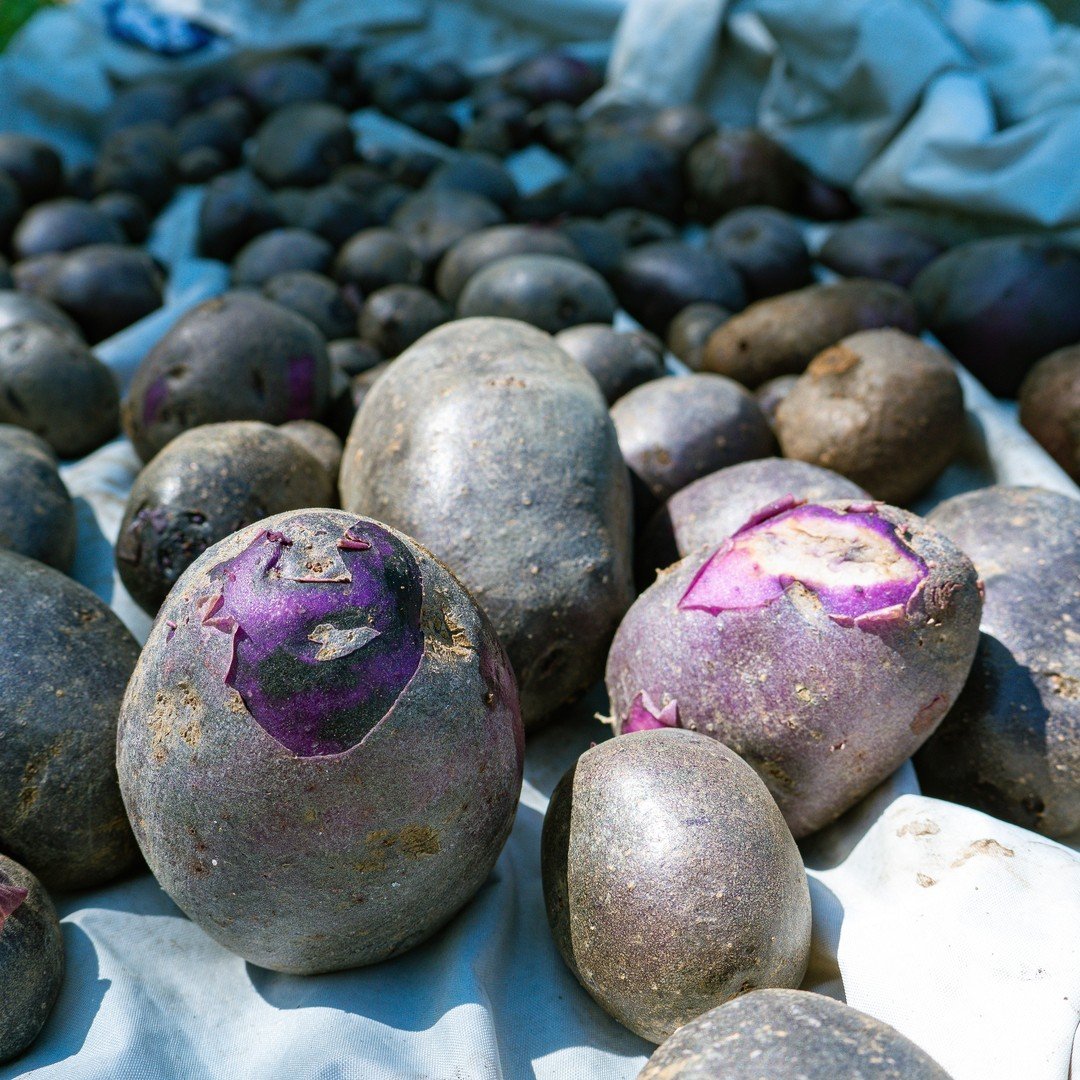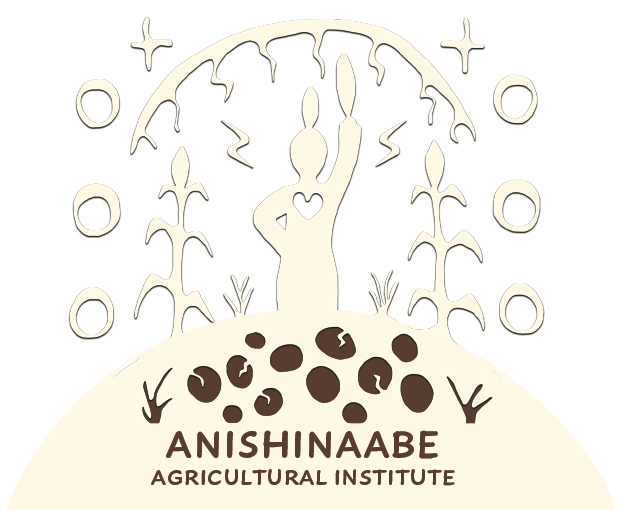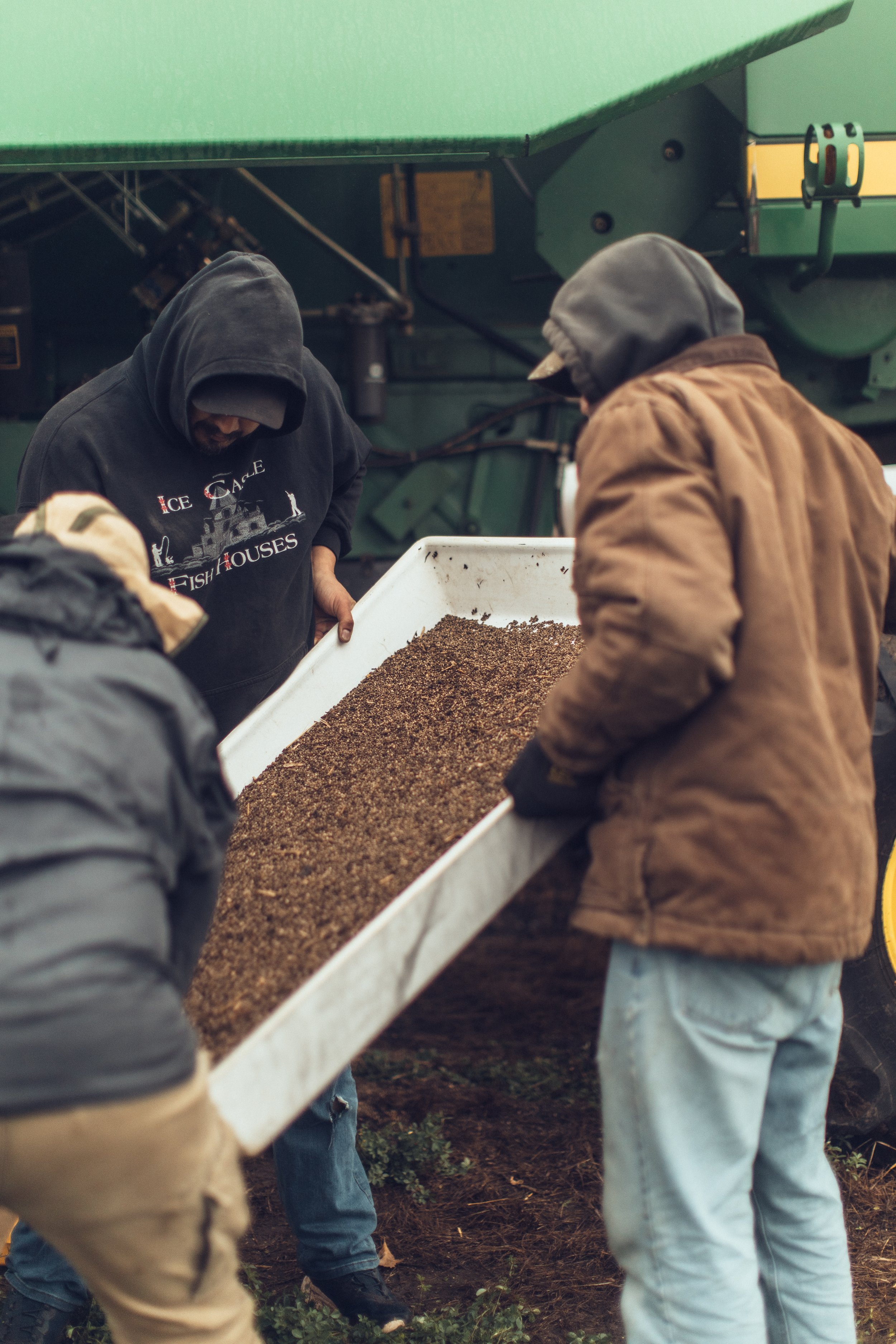
FOOD SOVEREIGNTY
“You cannot talk about being sovereign if you can’t feed yourself.”
-Sugar Bear Smith, Oneida
Growing a localized food economy on the White Earth Reservation where access to clean, fresh produce is extremely limited. Removing the reliance upon the industrialized agriculture food system by reviving our ancestral farming practices.
Regenerative Farming
Restoring our lands and reversing the harm done by industrialized agriculture. Recapturing ancestral seeds to grow our traditional foods while ensuring a healthy future for the next generations.
We use regenerative chemical-free practices that emphasize soil-building and leverage the power of the community to cultivate with minimal fossil fuels. We tend our crops with care, and tailor our practices to the specific needs of each site. We also use white clover extensively as a cover crop for weed suppression and soil-building.
We have integrated our crop production with our horse program in multiple ways including plowing our fields with horse power, planting in areas where horses lived and left manure over winter, spreading aged horse manure as fertilizer.
We Focus on Heritage Crops
Some of our beautiful native seeds.


Lakota Squash

Locally-adapted Mandan corn

Mandan Red Corn

Ojibwe Purple potatoes
Horse Power
Our organization stresses the importance of reducing fossil-fuels, transitioning to more sustainable farming methods, and entering the age of post-petroleum agriculture. In our case that means looking to our horses for the solution, and going back to the pre-petroleum days of the teamsters, that is horse powered agriculture. In the winter of 2022, we consulted with our Amish partners to see what they were using, and were able to order in for a “homesteader”, a horse drawn cart with all the attachments you would need to cultivate your land. We have spent the summer getting our team horses acquainted with this new equipment, and trying it out for various jobs in the field. Besides trying out our new horse farming equipment, we make an effort to use horse power for all kinds of jobs that we encounter on the farm, from pulling in bales of hay for the horses to collecting firewood for the people.
Integrating our crop production with our horse program in multiple ways including plowing our fields with horse power, planting in areas where horses lived and left manure over winter, spreading aged horse manure as fertilizer.
Food Distribution
More Info on Food Distribution
Elder Boxes
A weekly distribution program of food gifts for White Earth elders, who live in remote locations and districts. Filling the boxes with goods from all parts of our food ecosystem - coffee roasted on site, wild rice, meat, veggies from the garden, and homemade prepared foods like pickles, wild berry desserts, salsa, etc.
Check out the video below!
Winona’s Hemp Market Store & Coffee Shop
Down the road from AAI’s youth farm, is another distribution point for our fresh produce. We deliver farm fresh produce weekly throughout the season as well as supplying food for events that brought crowds to Snellman.
Winona’s Hemp Market Store & Coffee Shop 47075 MN-34, Osage, MN 56570 (link to maps)
Madeline Island CSA
The Anishinaabe CSA is providing a dozen subscribers on the Island with boxes of fresh vegetables, hand-harvested teas, Lake Superior fish, and a range of meats and canned goods from both Native and non-Native producers.
Photo: Kip O'Connell Dooley
Our Farms
The Ecosystem
Our community is surrounded by big agriculture, who has removed the trees, contaminated the waters, and depleted the soil. We are on a mission to bring life back to the land by reviving the ecosystem.
Pollinators
Pesticides and soil degradation has to lead to the near collapse of native pollinators. Working closely with local bee experts, we are housing bees across our farms in an effort to bring these crucial life sustainers back from the brink.
In 2022, our bee hives produced about 19 quarts of honey, plus wax products.
Food Forests
Cultivating a forest ecosystems for human food production. Over the past few years we have planted hundreds of perennial crops, trees and shrubs including choke cherries, hazelnuts and mushroom spores for foraging.
Fish Gut Fertilizer
Building our soil with fish - fish guts and bycatch from Red Lake Fisheries - combined with sawdust - waste from an Amish sawmill. This is our regional Amishinaabe circular economy.














